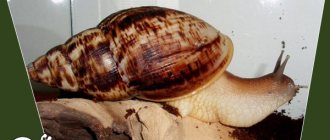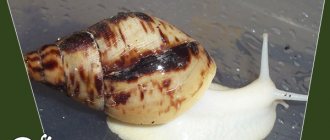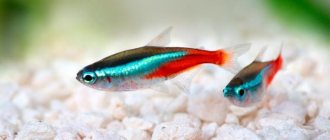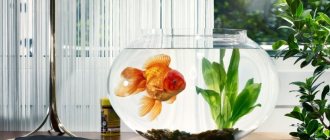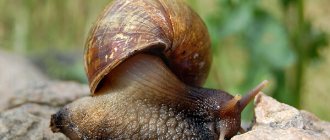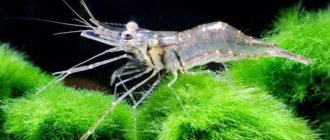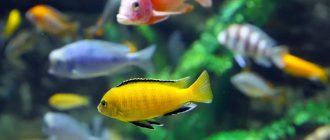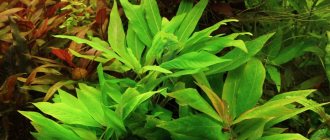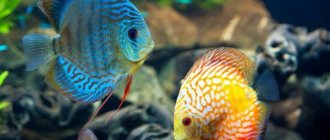The giant Achatina Fulica is the largest species of land mollusk in the family Achatinidae, commonly known as the African snail or the giant African land snail.
Native to tropical countries with a hot climate, where it causes serious damage to crops and native plants, being an agricultural pest, especially for sugar cane.
It belongs to an “aggressively” invasive species (one of the hundred most active invasive species), and is a carrier of a dangerous human infection. In European countries it is kept at home as an unpretentious pet. It is actively used in cooking and cosmetology. Read more about home snail therapy in our article.
Where does Achatina Fulika live?
Today, the spread of the snail's range has been stopped only thanks to strict quarantine measures. America was the first to introduce quarantine. Achatina's giant homeland is East Africa, but this mollusk has reached other parts of the world through trade as a food resource and accidental hatch.
This species was found in Xiamen (China) in 1930. Then Achatina went to Pratas (Taiwan Island), then throughout India and the Pacific region, from there to the Indian Ocean islands and the West Indies.
In the United States - in Hawaii and Florida, the most severe destruction of the Achatina snail is underway.
In Europe, due to climatic conditions, the survival of Achatina in nature is impossible; they are kept as pets.
Snail bathing
Often, novice owners are interested in how to bathe Achatina snails. It should be remembered that shellfish should not come into contact with any types of detergents!
It is not recommended to bathe Achatina under running tap water. Why? There are several reasons for this:
- a wet snail can slip out of your hands and break;
- under a strong stream she may choke;
- Tap water may contain chlorine and other undesirable compounds in concentrations that are harmful to Achatina.
You can bathe your pet in warm (30°C) settled water in shallow containers (saucer, plastic container). The water level should slightly cover the clam's leg. Achatina bathes well on its own in a equipped bath made of a plastic lid, or by collecting drops of water from the walls of the terrarium.
Unscheduled bathing is arranged for pets:
- sick;
- who went beyond the turn;
- very dirty;
- became infected with parasites.
Subspecies Achatina fulica
- Achatina Fulica hamillei Petit
- Achatina Fulica rodatzi Dunker
- Achatina Fulica sinistrosa Grateloup
- Achatina Fulica umbilicata Neville
Achatina Fulica Hamillei
Several hundred Fulica Hamillei have recently been observed in Bhutan and have begun attacking farmland and flower beds. It is believed that local stray dogs died because they were eaten.
See more similar articles:
How to choose an aquarium for keeping the Achatina snail:...
Terrarium for the Achatina snail - rules and examples...
Back Forward 1 of 16
Achatina Fulica rodatzi (albino)
An adult Fulica rodatzi measures over 20 cm (7.9 in) long and 7 cm (2.8 in) tall. The shell of Achatina is cone-shaped, approximately twice as long as it is wide. The direction of the curls of the giant Achatina shell is twisted either clockwise (more common) or counterclockwise.
Achatina Fulica sinistrosa
The color of the shell varies greatly and depends on the genetic data of the mollusk, but as a rule, brown color predominates. For Achatina fulica, a temperature of 23-27 degrees will be optimal; the snail can easily tolerate a temperature drop of up to 2 degrees. Achatina Fulica sinistrosa is native to East Africa, Kenya and Tanzania.
Numerous Achatina colonies can be born from a single pregnant snail. With confident steps it is colonizing some regions with a temperate climate. Currently, Achatina Fulica sinistrosa prefers regions in the humid tropics, also the Pacific Islands, South and East Asia, and the Caribbean.
Achatina Fulica umbilicata
Achatina fulica today can be found in agricultural areas, in coastal areas of natural forests, in leopards, in bushes, in cities, and near wetlands. For Achatina Fulica umbilicata, the optimal temperature for existence is 24-28 degrees, but it survives even when the temperature drops to 4 degrees.
Achatina fuсlica var, White Jades
White jade is an albino variety of Achatina fulica. She has a massive white body and a light-colored shell. Feels great in coconut bedding with a scattering of moss.
Demanding on soil moisture. If the humidity in the terrarium is too low, the snail goes into hibernation. Feels comfortable even at room temperature.
Sawdust
Never use sawdust as a substrate for a snail's terrarium! After all, the mollusk absorbs and passes through itself the filler on which it lives. Sharp pieces of sawdust can injure the snail's throat and body, leaving splinters and scratches, which cause inflammation and suppuration. When kept on sawdust, the horns are the first to suffer. In some cases, the horns die due to clogging with sawdust.
What and how to keep Achatina Fulik
At home, Achatina is kept in a terrarium, aquarium or plastic container, which must be at least 5 times the adult length of the snail. Give preference to a wide container rather than a tall one. Take care of proper ventilation to prevent mold and midges from appearing later. Read how to deal with midges here . At the bottom of the terrarium, place high-quality soil or coconut substrate, a bedding of dry leaves, moss, etc. The soil should be about 1/3 of the aquarium. They bury themselves in it during the day and sleep.
For Achatina, it is important to maintain soil moisture, but do not allow it to become waterlogged. The optimal humidity level is 65–75%. You can maintain humidity using a shallow container of water.
Achatina fulica feels great at a temperature of 22-26 degrees; an incandescent lamp or a thermal cord will help you maintain this temperature.
Recommended soils
✅ Coconut substrate
It is ideal for keeping gastropods:
- available;
- does not get dirty;
- perfectly absorbs moisture;
- can be coarse, fine-grained;
- Coconut fibers are absolutely safe for gastropods and prevent the proliferation of parasites.
How to use coconut substrate:
- knead a third of the briquette;
- pour boiling water for 20–30 minutes;
- drain the water;
- dry;
- spread in a thick layer of 10 to 15 cm.
✅ Leaf litter
It is mixed with moss and laid on top of the base soil. Does not retain moisture and decomposes quickly. Collected in the fall, stored in a dry place (in a box).
✅ Forest cover moss
It can be easily collected in a park or forest. Before use, it is thoroughly washed from forest debris with settled water (without chlorine), scalded, and soaked in water for several hours. It is laid on top of the main bedding and washed every week. If the moss is green, there is enough moisture; as soon as it dries, you need to irrigate it with water.
✅ Sphagnum moss
Achatina is perfect for keeping Achatina, as it retains moisture, insects do not breed in it, and does not stain animals. Sold in flower shops.
✅ Earth
Natural soil should not contain fertilizers, garbage, or animal feces. Before use, it must be thoroughly washed and roasted in the oven. The cooled soil is mixed with 1 - 2 tablespoons of ground chalk.
✅ Neutralized peat
Advantages of peat:
- inexpensive;
- accessible;
- retains moisture well;
- does not cake.
Flaws:
- Peat only with a pH above 7 is suitable for mollusks, since the acid-base environment leads to burns of the body;
- may contain eggs of helminths and other parasites (before creating the litter, it must be fried for at least 15 minutes).
✅ Hazelnut shells
Crushed nut shells do not absorb moisture well, and water accumulates underneath and quickly stagnates. An unpleasant odor may attract insects. This type of bedding needs to be changed very often, but it does not stain the Achatina and is reliable protection in case of falls.
What and how to feed Achatina Fulika
The giant African snail is a macrophytophagous herbivore; She eats a wide range of plant foods, loves fruits and vegetables, sometimes eats sand, very small stones, bones from carcasses and even plaster as a source of calcium.
To build a strong shell, Achatina snails need calcium carbonate. On rare occasions, they nibble on each other's shells. At home, Achatina is fed with grain mixtures, chicken food and fish food. Don't forget to pamper your pets with treats that you can easily prepare yourself.
For good and rapid growth of the snail, the daily diet of Achatina fulica should contain about 18.28% crude protein.
Achatina Fulica prefers to feast on soft plants or slightly decaying foods. But you don’t need to worry about its health; a snail will never poison itself. Young snails prefer to eat young plants, while older snails prefer to eat dead, rotting remains.
As the snail ages, the amount of food consumed increases. At home, it is recommended to feed cauliflower, pumpkin, mushrooms, champignons, zucchini, dandelion leaves and other vegetables except citrus fruits.
Once a month you can give boiled porridge without salt. Be sure to include calcium and protein supplements in your Achatina menu. See their recipes here . Rarely and in small quantities, you can give a few pieces of boiled chicken without salt.
For the Achatina snail, it is fatal to consume table salt, sugar, citrus fruits, spicy and sour foods.
For a beautiful shell, the mollusk’s diet should be supplemented with eggshells ground into dust, river shell rock, feed chalk and bone meal. Also, do not forget about sepia, which is sold in pet stores and should always be in the terrarium.
The more different sources of calcium a snail has, the easier it is to grow a large, beautiful and durable shell. Don't forget about protein sources: gammarus, daphnia or grain mixture.
Sand
Breeders have different opinions regarding sand as a filler for a terrarium. Sand is the natural habitat of Achatina, some say. Snails feel comfortable in the sand; such an environment stimulates Achatina to reproduce and lay eggs. Others believe that it is not advisable to keep a snail on sand, since sand does not retain water well, scratches the body and shell of the mollusk, and also scratches and stains the glass walls of the terrarium. The snail shell gets scratched by sand, becomes dull and white, and it is not possible to restore its original appearance.
What to feed the little Achatina fulika
It is strictly forbidden to give salted, smoked, or alcoholic foods - it will be fatal. Also, do not forget about ground mixtures of cereals, seeds and herbs, and porridges. Sometimes they feed boiled porridge “from three grains” without salt, a mixture of ground cereals, herbs and seeds. Read more in our article .
At home, small Achatina are given lettuce leaves, grated pumpkin, cucumber and carrots. Sweet fruits, pureed daphnia, gammarus and calcium: eggshells, food chalk, sepia, etc.
Newborn Achatina Fulica should be fed from 2-3 days with soft food and very little, so that the babies do not bury themselves in the food and suffocate.
Reproduction of the giant Achatina
Achatina Fulica – hermaphrodite; Each snail has testes and ovaries, which means it produces sperm and eggs. Self-fertilization occurs only in small populations. Usually both snails in a pair simultaneously transfer gametes to each other (bilateral).
Achatina begins to reproduce when it grows to a certain size and age. Mollusks of the same size mate more often.
Achatina of different sizes mate unilaterally with a larger snail, which serves as the female. A mating pair of Fuliks is immediately visible by their intriguing mating behavior: prolonged caresses of each other's head and front parts of the body.
Courtship can last up to half an hour, the actual transfer of gametes lasts for two hours. The resulting sperm can remain in the mollusk’s body for up to two years. See more information about snail reproduction here .
The number of eggs in a clutch is more than 300. Achatina fulica can lay five to six clutches per year with egg viability of about 90%. Achatina Fulica grows actively until about six months, after which growth slows down, but does not stop.
The average lifespan is usually five or six years in captivity, but Achatina Fulica can sometimes live up to ten years.
Behavior of Achatina Fulik
They are more active at night. They spend the daytime in secluded places, buried in the ground, and become active only in the evening.
American scientists have established that Achatina Fulica has long-term memory: it remembers everything that happened within half an hour, remembers the location of the feeder with food and can return to it.
Young Achatina fulicas are mobile and capable of long-distance migrations. In nature, they do not return to the same place.
Old snails, on the contrary, have a permanent resting place, from where they crawl out in search of food. They try not to move away from the house more than 4 - 6 meters. When moving the fuliks from their shelter 20 meters, they easily return back.
African Achatina, if kept in poor conditions, can hibernate for up to 6 months. Low temperature and humidity in the terrarium, changing the diet, replacing the soil with a different type of substrate, etc.
The snail seals itself in the shell by secreting a secretion of calcareous compounds, which dries out when exposed to air. This is an impermeable material.
While hibernating, the mollusk uses up the water reserves of its body. And with the reserves, the vital forces of Achatina fulik also go away. If your Achatina has gone into hibernation, there is no need to panic, spray it with warm water or increase the humidity, it will quickly wake up.
The snail went around the turn
The event when Achatina goes beyond the turn is very dangerous. In this case, it does not cover the entrance to the sink with a protective membrane, but simply sinks deeply into the sink and does not come out. If you don't help her, she will die. Why is this happening?
The reason for caring for the coil is improper maintenance of the pet:
- dirty, wet litter;
- parasites;
- disease;
- cold;
- injuries;
- unsanitary conditions in the container;
- exhaustion.
✅ How to help a snail come out of a coma
Try to wet it with warm water. If this does not help, bury it in warm, damp soil for a day. It is also necessary to clean the container, prepare a drinking bowl (milk diluted with water), and a nutritional mixture. As soon as the baby sticks her head out, her face can be smeared with fruit and vegetable puree with the addition of chalk or crushed egg shells.
What diseases does Achatina Fulika suffer from?
Parasites of Achatina fulica:
- Aelurostrongylus abstrusus, Angiostrongylus cantonensis – causes eosinophilic meningoencephalitis
- Angiostrongylus costaricensis – causes angiostrongyliasis
- Schistosoma Mansoni – causes schistosomiasis, found in feces; Trichuris SPP and Hymenolepis SPP – found in feces
- Strongyloides SPP – found in feces and mucous secretions
In the wild, Achatina Fulica often harbors the parasitic nematode Angiostrongylus cantonensis, which causes very serious meningitis in humans. You can become infected with meningitis by eating poorly cooked or raw snail meat. Even well-cooked wild snails can infect humans with nematodes and cause a life-threatening infection.
Achatina giant is an invasive species. It is a pest of agriculture and homestead farming. Infects humans, animals and plants with pathogenic microorganisms.
To prevent its introduction and further spread, strict quarantine has been introduced in many countries.
Achatina Fulika in cooking
Snails have been used as food since ancient times. The Egyptians and ancient Greeks highly valued snail meat for its dietary value. Read recipes from Achatina here. Therefore, during World War II, Achatina Fulica was used as a food reserve for American soldiers. But not only the American military ate the giant snail during the war; the soldiers of the Japanese army also fell in love with it.
In Africa and some cities in Brazil, Achatina is used for religious purposes, as a rich offering to the deity Oxala. In Nigeria, Achatina fulica is revered not only as an offering to the gods, but also as an easily accessible source of protein. All Africans eat the giant snail.
Hazelnut shells and walnut membranes
Very rarely, crushed walnut membranes or hazelnut or hazelnut shells crushed into coarse crumbs are used as a filler for snails. This type of litter absorbs almost no water. As a result, moisture accumulates at the bottom, stagnates, an unpleasant odor appears in the terrarium, and midges and mosquitoes appear. In addition, large pieces of shell can injure the snail's body. Therefore, if you decide to use such a filler for your snail, be prepared for frequent cleaning and changing the bedding.
